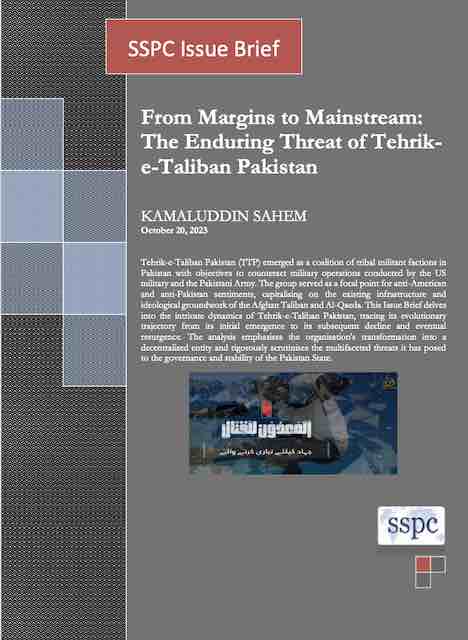From Margins to Mainstream: The Enduring Threat of Tehrik-e-Taliban Pakistan

Since the Soviet incursion into Afghanistan, Pakistan has been strategically invested in its neighbouring country, seeking to establish a sphere of influence there. Pakistan has employed a multifaceted approach to realise this ambition over the years. This has ranged from backing the Afghan Mujahedeen during the Soviet-Afghan War to fostering extremist and terrorist organisations within the region, culminating in its extensive support for the Afghan Taliban throughout the 1990s. The security landscape shifted dramatically following the US-led military mission in Afghanistan in 2001, which led to the toppling of the Taliban regime. Subsequently, key figures from the Taliban and Al-Qaeda sought refuge in Pakistan's tribal areas. There, they initiated recruitment drives and founded religious educational institutions, thereby accelerating the process of Talibanization within these regions. During this period, Tehrik-e-Taliban Pakistan (TTP) emerged as a coalition of tribal factions. Its primary objective was to counteract operations conducted by the US military and the Pakistani Army. The group served as a focal point for anti-American and anti-Pakistan sentiments, capitalising on the existing infrastructure and ideological groundwork of the Afghan Taliban and Al-Qaeda.
This Issue Brief delves into the intricate dynamics of Tehrik-e-Taliban Pakistan, tracing its evolutionary trajectory from its initial emergence to its subsequent decline and eventual resurgence. The analysis emphasises the organisation's transformation into a decentralised entity and rigorously scrutinises the multifaceted threats it has posed to the governance and stability of the Pakistan State.